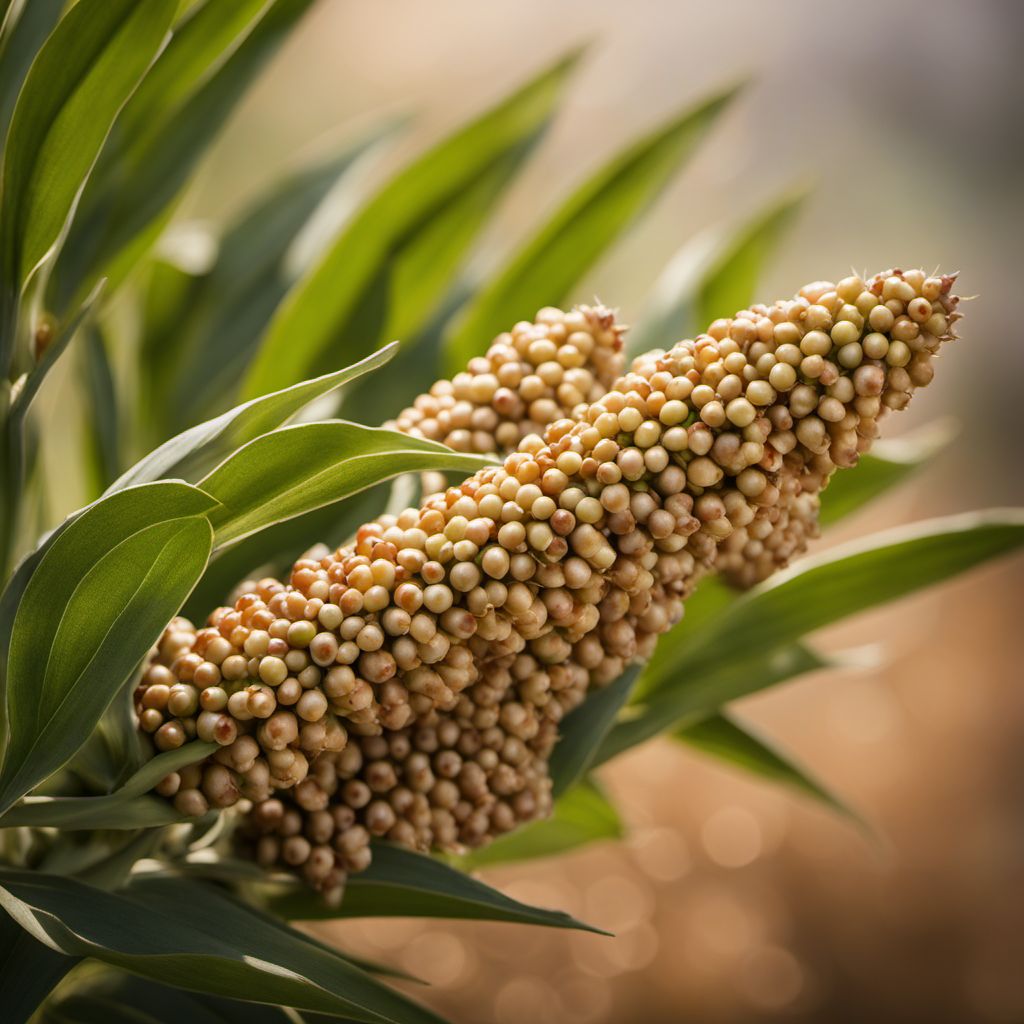
Ingredient
Other species of genus Sorghum, not elsewhere mentioned
The Versatile Sorghum Family
Other species of genus Sorghum, not elsewhere mentioned, are a group of grains that belong to the Sorghum genus. These grains vary in size, shape, and color, and can be used in a multitude of culinary applications. They possess a nutty flavor and a chewy texture, making them a delightful addition to various dishes.
Origins and history
Sorghum, a member of the grass family, originated in Africa and has been cultivated for thousands of years. It has played a significant role in African, Asian, and Middle Eastern cuisines, where it is used as a staple grain. Other species of genus Sorghum, not elsewhere mentioned, have been cultivated in different regions around the world, adapting to local climates and culinary traditions.
Nutritional information
Other species of genus Sorghum, not elsewhere mentioned, are a good source of dietary fiber, protein, and essential minerals such as iron and magnesium. They are also gluten-free, making them a suitable option for individuals with gluten sensitivities or celiac disease.
Allergens
Other species of genus Sorghum, not elsewhere mentioned, do not contain any known allergens. However, cross-contamination may occur during processing or packaging, so individuals with severe allergies should exercise caution and check for potential cross-contact with allergenic ingredients.
How to select
When selecting other species of genus Sorghum, not elsewhere mentioned, look for grains that are plump, intact, and free from moisture or signs of insect damage. The color may vary depending on the specific variety, ranging from white and yellow to red and brown. Opt for organic or locally sourced grains whenever possible to support sustainable farming practices and ensure higher quality.
Storage recommendations
To maintain the freshness and quality of other species of genus Sorghum, not elsewhere mentioned, store them in airtight containers in a cool, dry place. Avoid exposure to moisture, heat, or direct sunlight, as these factors can affect the grains' texture and flavor. Proper storage will help preserve their nutritional value and extend their shelf life.
How to produce
Other species of genus Sorghum, not elsewhere mentioned, can be grown by amateur gardeners in regions with suitable climates. They require well-drained soil, ample sunlight, and regular watering. Consult local gardening resources or agricultural extension offices for specific cultivation guidelines based on your location and the variety of sorghum you wish to grow.
Preparation tips
Other species of genus Sorghum, not elsewhere mentioned, can be cooked similarly to rice or quinoa. Rinse the grains thoroughly before cooking to remove any debris or impurities. Use a ratio of 1:2 (grain to water) and simmer them in a covered pot until tender, usually around 20-30 minutes. Once cooked, they can be enjoyed as a side dish, added to salads, soups, stews, or used as a base for grain bowls. They can also be ground into flour for baking or used to make porridge and fermented beverages.
Culinary uses
Other species of genus Sorghum, not elsewhere mentioned, are versatile ingredients that can be used in a variety of culinary applications. They can be incorporated into pilafs, risottos, stir-fries, and grain salads. The grains can also be popped like popcorn or milled into flour for gluten-free baking. In some cultures, they are fermented to make traditional beverages like beer or porridges like kisra" in Sudan or "togbei" in Nigeria."
Availability
Other species of genus Sorghum, not elsewhere mentioned, are cultivated in various regions around the world, including Africa, Asia, Australia, and the Americas. The specific varieties and availability may vary depending on the country and local agricultural practices.

